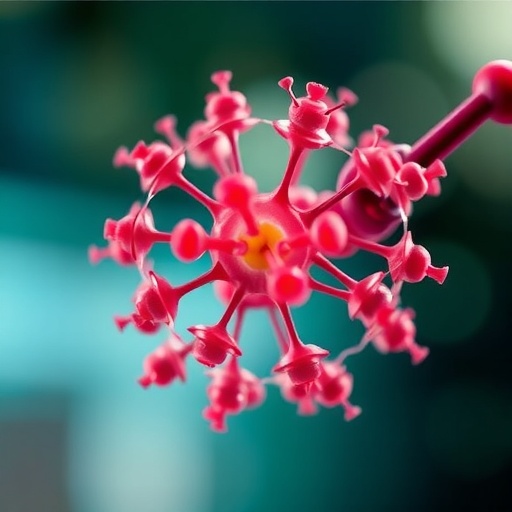Phospholipid Metabolism: The Unsung Regulator of Innate Immunity and Inflammation
Lipid molecules transcend their classical role as mere building blocks of cellular membranes; they are central orchestrators of immunological defense and inflammatory processes. Among these lipids, phospholipids stand out as pivotal components that not only sustain cellular architecture but also serve as dynamic modulators in immune cell function. Recent advances elucidate how the metabolism of phospholipids reprograms innate immunity, charting new paths toward innovative treatments for inflammatory diseases.
Innate immune cells deploy a sophisticated arsenal, and phospholipid metabolism dynamically reshapes their responses by governing membrane fluidity, providing key signaling intermediates, and modulating cell migration, differentiation, and survival. This multilayered regulation highlights the intricate crosstalk between lipid metabolic pathways and immune cell behavior, underscoring the complexity of immune activation and resolution.
Central to this lipid-driven modulation are phospholipases—enzymes characterized by their ability to hydrolyze phospholipids at distinct sites, generating bioactive metabolites that dramatically influence immune responses. The three main classes of phospholipases—PLA2, PLC, and PLD—catalyze specific cleavage events, liberating lysophospholipids and fatty acids critical for cell signaling and functional diversity among innate immune subsets such as macrophages, dendritic cells, neutrophils, and mast cells.
PLA2, for instance, cleaves at the sn-2 acyl bond of phospholipids releasing arachidonic acid, a precursor for potent eicosanoids. These lipid mediators orchestrate inflammatory cascades, influencing vasodilation, leukocyte recruitment, and cytokine production. Similarly, PLC activation liberates diacylglycerol and inositol trisphosphate, pivotal second messengers regulating intracellular calcium levels and protein kinase C activity, thereby tuning the inflammatory response.
Emerging evidence details how aberrations in phospholipid metabolism contribute to the pathogenesis of immune-mediated diseases. In autoimmune disorders such as rheumatoid arthritis and multiple sclerosis, dysregulated phospholipid signaling potentiates persistent inflammation and escalates immune cell infiltration into affected tissues. This dysregulation perpetuates tissue damage, highlighting phospholipid metabolism as a lynchpin in disease progression.
Cardiovascular diseases further exemplify lipid metabolism’s pathological impact. Oxidized phospholipids accumulate within atherosclerotic plaques, enhancing endothelial dysfunction and promoting chronic inflammation. These oxidized species act as danger signals recruiting innate immune cells, thereby exacerbating plaque instability and cardiovascular risk.
Cancer biology unveils an intriguing duality in phospholipid metabolism. Ferroptosis, a form of iron-dependent cell death induced by phospholipid peroxidation, emerges as a double-edged sword: it can suppress tumor growth by eliminating malignant cells, yet certain tumors subvert this pathway to escape immune detection, illustrating the nuanced role of lipid metabolism in the tumor microenvironment.
Despite promising advances, several critical challenges temper the clinical translation of phospholipid-targeted therapies. Understanding the spatiotemporal dynamics of lipid metabolism and delineating cell type-specific functions remains elusive. Innovative approaches, including single-cell omics and spatial transcriptomics, are imperative to unravel these complex networks within distinct tissue microenvironments.
Furthermore, next-generation imaging modalities and high-precision small-molecule inhibitors hold promise for enhancing therapeutic specificity. These technological breakthroughs will facilitate the design of interventions that selectively modulate phospholipid metabolic pathways, mitigating off-target effects and maximizing clinical efficacy.
This burgeoning field of immunometabolism leverages an interdisciplinary fusion of biochemistry, molecular biology, and immunology. The synthesis of basic science insights with translational research fosters a promising future where lipid metabolism modulation becomes a cornerstone of therapies against infectious, inflammatory, and neoplastic diseases.
In sum, the intricate choreography of phospholipid metabolism in innate immunity offers profound implications for understanding and manipulating inflammatory responses. The research spearheaded by Professor Juan Liu, Professor Luke O’Neill, and Dr. Yali Chen synthesizes this burgeoning knowledge landscape, revealing both mechanistic underpinnings and therapeutic potentials.
As phospholipid metabolism continues to be unveiled as a master regulator, its targeting offers a paradigm shift in combating inflammation-driven pathologies. The next frontier lies not only in comprehending metabolic nuances but also in harnessing these insights to design tailored, metabolism-based immunotherapies that redefine patient care.
Amid the intricacies of bioactive lipid generation and immune modulation, the marriage of cutting-edge technology with incisive biochemical insights promises a revolutionary chapter in inflammation and immunity. The collective scientific endeavor to decode phospholipid metabolism’s role stands to transform medical science’s approach to some of the most daunting health challenges of our time.
Subject of Research: Not applicable
Article Title: Phospholipid Metabolism in Innate Immunity and Inflammation: From Basic to Clinic
News Publication Date: September 29, 2025
References: DOI: 10.1007/s44466-025-00001-5
Image Credits: Professor Juan Liu, Naval Medical University, Shanghai, China




